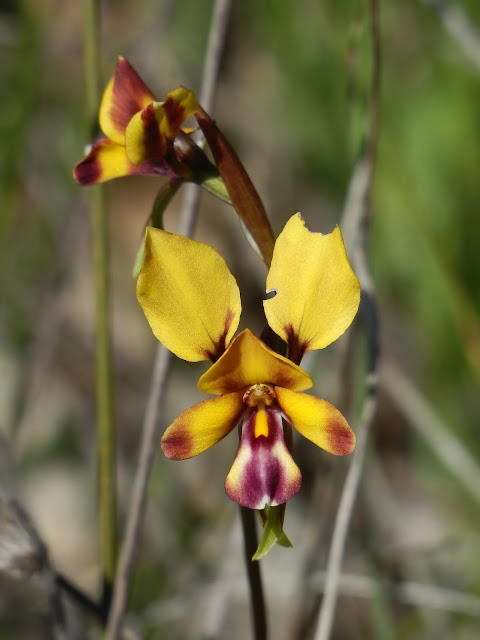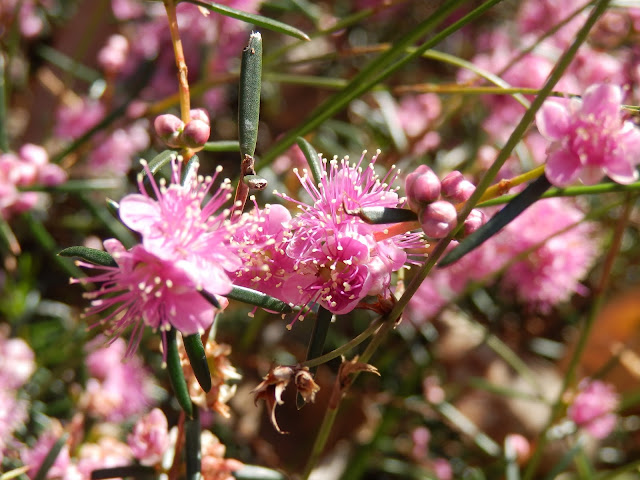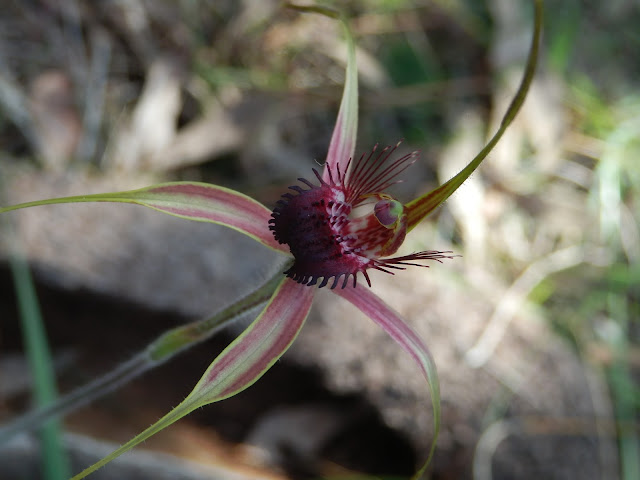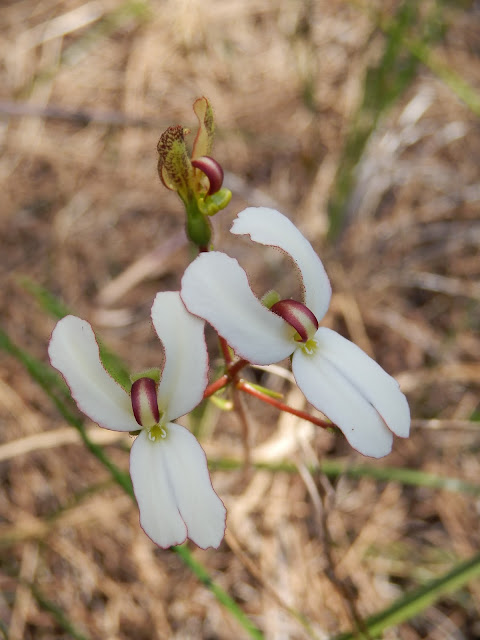Dad was the one who discovered that the native orchids were in bloom at Wireless Hill, and it being Father's Day, he decided that that was the perfect place to spend the morning.
As the three of us (my sister currently lives in Berlin) were more than happy taking photos and stalking the park looking for more flowers to take photos of, this sounded like a perfect plan.
While I think we were there specifically for the orchids, it was difficult to focus solely on them, for the entire park was ablaze with colour. In particular, the Kangaroo Paws and the Donkey Orchids which formed clusters on either side of the designated path.
Australian Natives are known for their craziness, and the orchids are no different. Instead of being like the big heavy cymbidiums and (wedding bouquet)phalaenopsis with which people are familiar, West Australian orchids are small, delicate and exceptionally crazy.
Though it is hard to believe, they do warrant such names as the 'Donkey Orchid' 'Flying Duck Orchid' and 'King-in-his-Carriage Orchid'
 |
| Donkey Orchid |
On occasion the gentle breeze was a nightmare as the orchids are delicate enough to sway madly, blurring our macro focus and on occasion causing us to lose sight of the flower altogether (looking through the viewfinder).
 |
| Rattle Beak Orchid |
 |
| Dancing Orchid |
Detecting a continual rustle in the undergrowth (but remaining wary of snakes) I spotted this guy trying to escape undetected, and creeping after him, I stumbled upon the first of the Spider Orchids.
 |
| Spider Orchid |
We weren't quite sure what this drooping beauty (below) was but photographed it none the less so Mum could spend the evening pouring through her Encyclopedia of Western Australian Orchids looking for it.
 |
| Jug Orchid |
 |
| Cowslip Orchid bud |
Truthfully, at this time of year, forget about taking foreign guests to Kings Park. The view there is... well, of the city (and Swan river), but if you want to show them our strange but beautiful plants in abundance, and in a natural setting, bring them to Wireless Hill. Nothing will quite compare, with the colour at their feet and the sounds of Wattle birds and Kookaburras squabbling in the surrounding trees.














































No comments:
Post a Comment